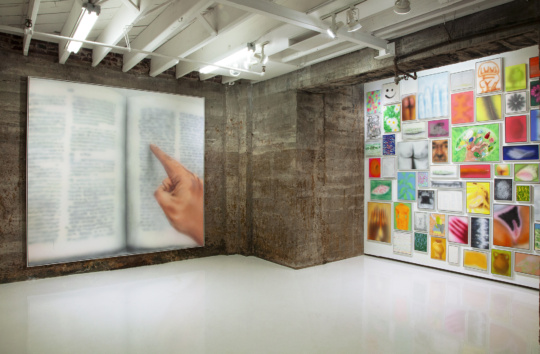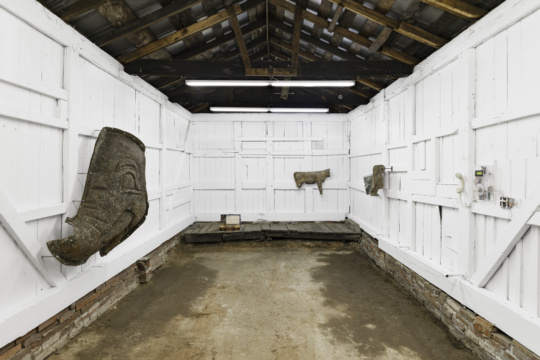
Gore Point
by Pam Longobardi, GYRE Expedition, June 11, 2013
By 6:30 am, after the 9 hour passage from Seward [AK] in pitching 6 ft+ swells, we stirred from bed to find ourselves in a glass-flat cove in complete silence. After asparagus frittata by the remarkable Norseman chef Aaron, we began mustering for our first beach landing at Gore Point. This particular location is achingly scenic, a beachhead strewn with a massive log berm studded with large blocks of styrofoam, the giant black buoys of tsunami debris and a shipwreck, and slivery seal heads watching from the surf. In approaching the site, its important to me to try and read the message of the arrangements and juxtapositions of how things lie: I photograph these. My first photo was of a black rectangular shark egg case lined up in tandem with a black oil bottle—parallel universes.
No matter how overwhelming it is, I can’t leave a beach without collecting and carrying out as much plastic as I physically can. What one person can remove is just a drop in the ocean, but every piece we take is one less piece that will end up in a bird, turtle, or smashed to smithereens of microplastic. I am particularly interested in the black plastic: It more symbolically represents the dark nature of plastic. I am imagining a piece that juxtaposes a giant black form spewing forth the multicolored eye-candy of floats, nets, products.
Cleaning up anything in these vast and remote beaches involves climbing up and dragging everything over infields of full grown tree logs. We found, among the normal background plastic of Alaska (nets,product bottles, bumpers, floats), newly landed tsunami debris, particularly these huge black egglike floats that are part of oyster aquaculture. We then had to drag all the junk on a 20 minute hike through the forest to the opposite site of the point, a less pounding break than where we were anchored.



FIND GYRE EXPEDITION ONLINE:
Website, Facebook, Twitter, You Tube, Google+, Pinterest
THE ORGANIZERS:
Gyre is organized by the Alaska Sea Life Center and the Anchorage Museum.
The Alaska Sea Life Center in Seward, AK is a private, non-profit marine science facility dedicated to generating and sharing scientific knowledge to promote understanding and stewardship of Alaska’s marine ecosystems. The Anchorage Museum’s mission is to share and connect Alaska with the world through art, history and science.
THE TEAM:
Expedition Leader: Howard Ferren, Alaska SeaLife Center
Curator: Julie Decker, Anchorage Museum
Scientist: Carl Safina, Founder and President, Blue Ocean Institute and host of PBS series Saving the Ocean
Project Artists: Pam Longobardi, GA; Mark Dion, NY; Andrew Hughes, UK; Karen Larsen, AK
Photographer: Kip Evans, CA
Filmographer: JJ Kelly, producer of Nat Geo/PBS Battle for the Elephants
The GYRE Expedition, Alaska: Pam Longobardi's Field Report #2
Related Stories
Reviews
Reviews
Reviews
A Landscaped Longed For: The Garden as Disturbance at the Crisp-Ellert Art Museum, St. Augustine
Christopher Stephen reviews the visual metaphors of the garden found in A Landscape Longed For: The Garden as Disturbance at the Crisp-Ellert Art Museum, St. Augustine.
Kevin Ford: Ids of March at Tops Gallery, Memphis
Maria Owen reviews the playful invitations found in Kevin Ford's Ids of March at Tops Gallery, Memphis.
As for me, I’m just passing through this planet at Bad Water, Knoxville
Harrison Wayne reviews the entangled sculptures and taxidermic specimens found in As for me, I’m just passing through this planet at Bad Water, Knoxville.




